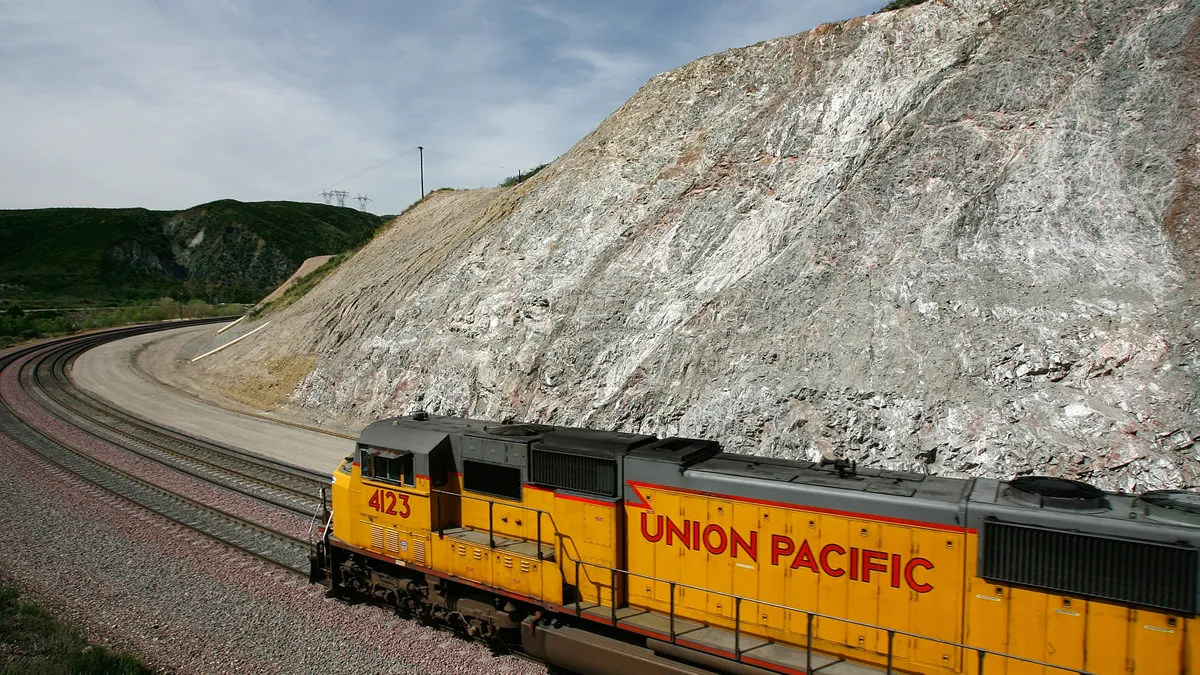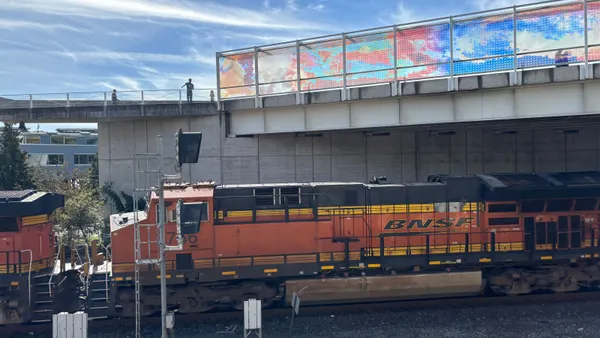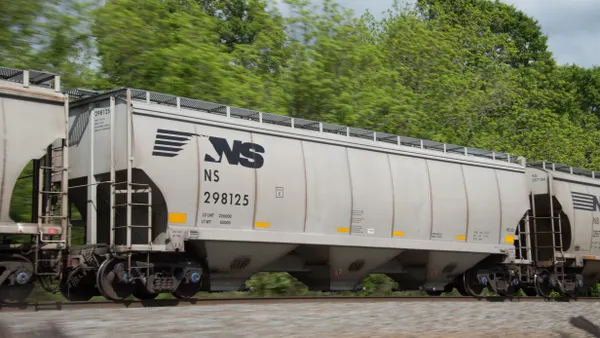Dive Brief:
- Union Pacific purchased five autonomous cranes as part of an effort to reduce greenhouse gases and streamline the loading and unloading process at its Chicago-area terminal, according to a recent announcement.
- The company will start testing the cranes, which rely on artificial intelligence to semi-autonomously load and unload intermodal containers onto trucks, next year at the railroad's Global 4 Intermodal Terminal in Joliet, Illinois, around 40 miles southwest of Chicago. Skilled workers are still required, however, to supervise the crane as it lowers containers onto the truck chassis to "ensure it is smoothly and safety done," according to a release.
- Union Pacific said it may expand use of autonomous cranes in other terminals, depending on the results of the test. "These electric cranes will help us meet our goals of building a more sustainable future in the transportation industry, while giving our customers’ faster and more efficient service," said Jeff Chapman, general director of capacity and technology, in a statement.
Dive Insight:
Union Pacific is looking to technology to streamline operations at its Chicago-area hub, which has been overwhelmed with shipments in recent months from the crowded ports of Los Angeles and Long Beach.
As imports from Asia increase ahead of the holiday season, supply chain networks struggle to quickly move boxes from Union Pacific ramps to warehouses and distribution centers. The railroad had to pause service at its Joliet terminal in July for seven days to address a backlog of containers that had piled up.
Union Pacific expects issues to "persist through the end of the year, as the capacity to move boxes from our ramp to the final destination falls short of demand," President and CEO Lance Fritz said in an earnings call in July.
The autonomous cranes can automatically locate and lift containers, cutting down cargo handling time. Truck drivers will be informed where to pick up the load through an app.
"The crane has the ability to manage multiple priorities, work orders and analyze future lifts, basically do it all," said Matthew Wafer, senior manager of capital planning, in a statement.
Union Pacific in particular has targeted AI as part of plans to make service more reliable, with CFO Jennifer Hamann saying at a September conference that the railroad is looking to add "more machine learning" and other types of technology to give shippers more visibility.
"We need to improve the predictability of the service and provide more accurate lead times to our customers," Hamann said, adding that the railroad is "looking at different ways through APIs to give more control and visibility to our customers directly."
The new cranes also produce no greenhouse gases and will eliminate the use of many diesel trucks, according to a Union Pacific statement. The railroad is targeting a 26% reduction in "absolute scope 1 and 2 greenhouse gas emissions" by 2030, Beth Whited, executive vice president and chief human resource officer, said in August.
Other intermodal terminals are also adopting technology to speed up operations and lower the carbon footprint. The ports of Baltimore and Wilmington, Delaware, have purchased electric cranes as part of plans to expand capacity and handle higher volumes of shipments. Cranes at the port of Wilmington, for example, can complete a production pick in 15 minutes that would have taken a reach stacker three hours worth of labor and fuel, according to a release.















